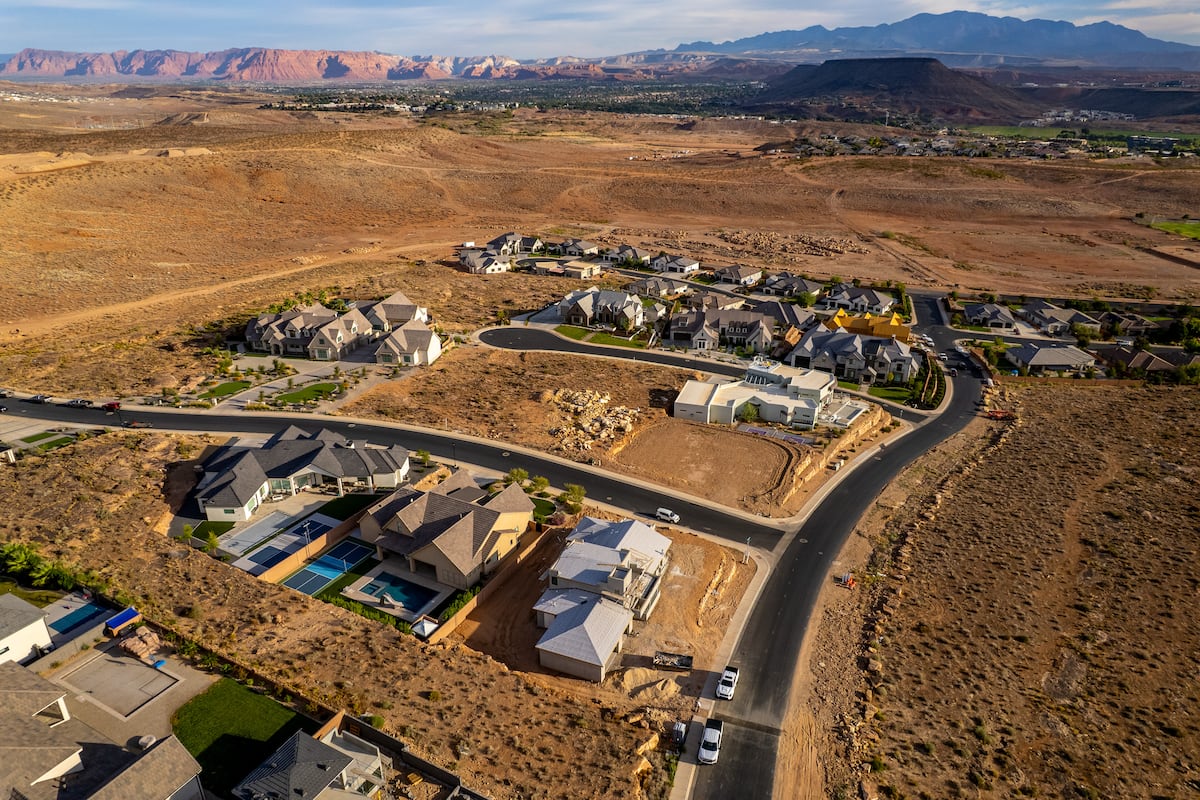Southern Utah officials optimistic latest water shortage plan will pass muster with cities
(Trent Nelson | The Salt Lake Tribune) Homes in St. George on Thursday, Sept. 18, 2025.
St. George • After weathering one of the driest water years in more than a century, officials in drought-stricken Washington County are optimistic they are finally on track to get a water shortage plan in place.
In the latest draft, the Washington County Water Conservancy District’s board would be empowered to declare a water shortage and implement targeted reductions in water use, but officials in member cities would decide how best to meet those targets should a severe drought, earthquake or other natural disaster dry up the water supply.
Under the previous proposal, which was opposed by some mayors, the district would have had the authority to impose water cuts and restrictions on its eight member cities under certain scenarios.
“This gives [elected officials in each city] the opportunity to work closely with their own residents to come up with strategies that will appeal and produce the necessary water savings for their own communities,” said Doug Bennett, the district’s conservation manager.
The St. George area is coming off the ninth-driest water year since 1893, according to Glen Merrill, hydrologist with the National Weather Service’s Salt Lake City office. That ranking, he added, is derived from comparing years when water data was collected for all 12 months.
All told, Merrill said, the area received 4.52 inches during the water year that wrapped up at the end of September, compared to its historical average of just over 8 inches. He said the summer monsoon season, which stretches from June through September, was also below normal.
Models suggest the current model year could follow a similar trend, Merrill added.
Sand Hollow and Quail Creek reservoirs ended the water year moderately healthy, at 71% and 57% of capacity, according to district officials, but that could change if the drought persists through the coming year.
“Another low water year would strain our storage,” Zach Renstrom, general manager of the water district, stated in a recent news release.
In the latest shortage plan, the district board can declare four stages of shortage that could require water use reductions of 10% and 60%. In a shortage situation, the district can give each city a water budget that Bennett said would be determined by the number of connections, with larger cities receiving higher allocations.
Living within a budget
(Trent Nelson | The Salt Lake Tribune) Quail Creek Reservoir in Hurricane on Tuesday September 16, 2025.
While member cities can determine how to cut water usage to stay within their water budget, those failing to do so could see a 300% to 500% hike in the cost of district water, depending on the degree to which they exceeded their budget.
Bennett said cities, in turn, would likely need to pass on that cost increase to their customers.
“Presumably,” he added, “they would come up with a way to do that to discourage the highest water users in their service area from using so much water.”
Cities that use less than their budgeted amount would be required to stick with the baseline amount they typically use.
Under the plan, district board members are responsible for declaring or changing a shortage stage. They would also be able to impose additional requirements on cities that fail to meet water-reduction objectives.
Ivins Mayor Chris Hart said the revised plan is a major upgrade from the previous one.
“I’ve been a big advocate for the district providing [water reduction] targets and allowing cities to decide how to meet those goals,” Hart said. “So I’m thrilled to see that [provision] in this final draft.”
Conserve Southwest Utah also praised the plan, saying the county is at a tipping point with respect to its water supply and has urged the district to pass a shortage plan sooner rather than later.
“We support this plan being implemented and active as soon as possible,” said Karen Goodfellow, Conserve Southwest Utah’s vice president and water team manager. “It is up to all of us to protect and preserve our precious resources.”
Cities have until Oct. 17 to provide input on the plan to the district. Bennett said they are hopeful the district’s advisory committee will recommend approval of the shortage plan at their Oct. 29 meeting. The district’s board of directors would then meet on Nov. 3 to decide whether to approve the document.

